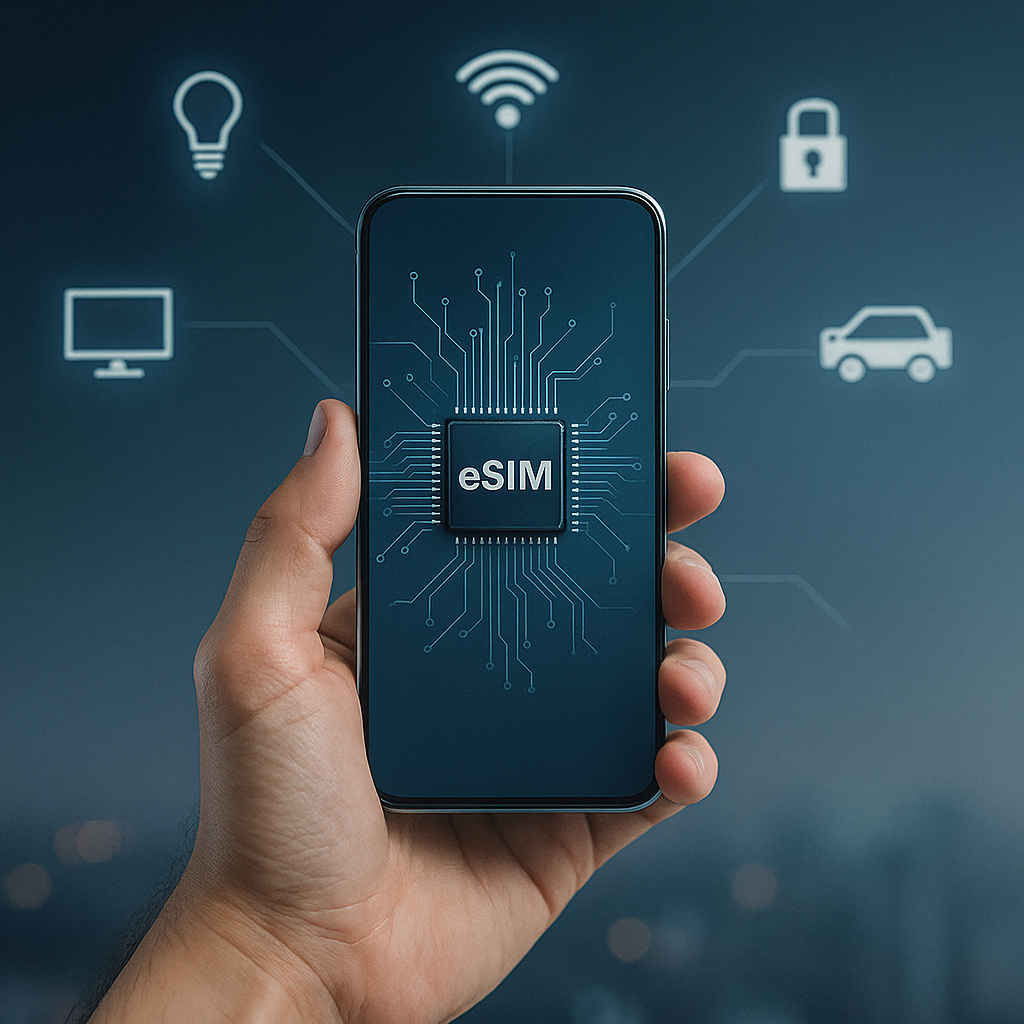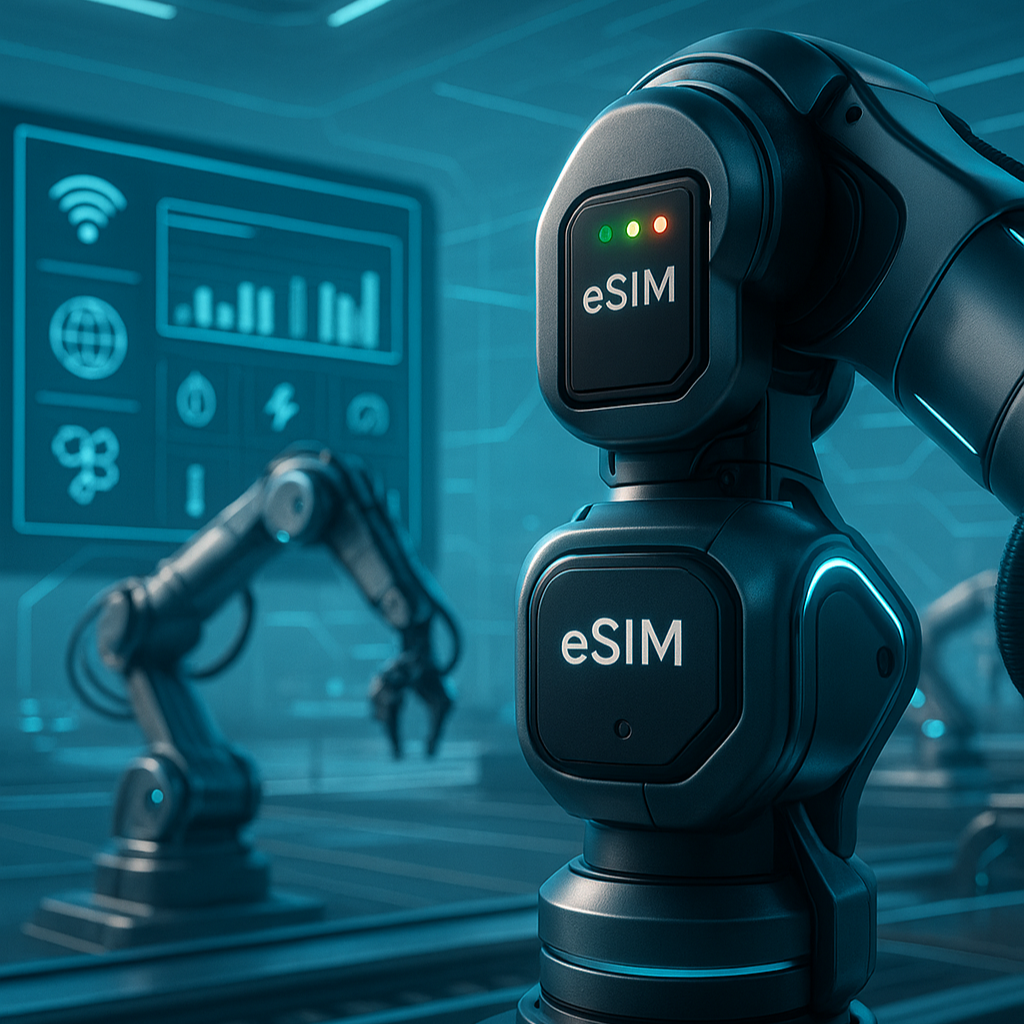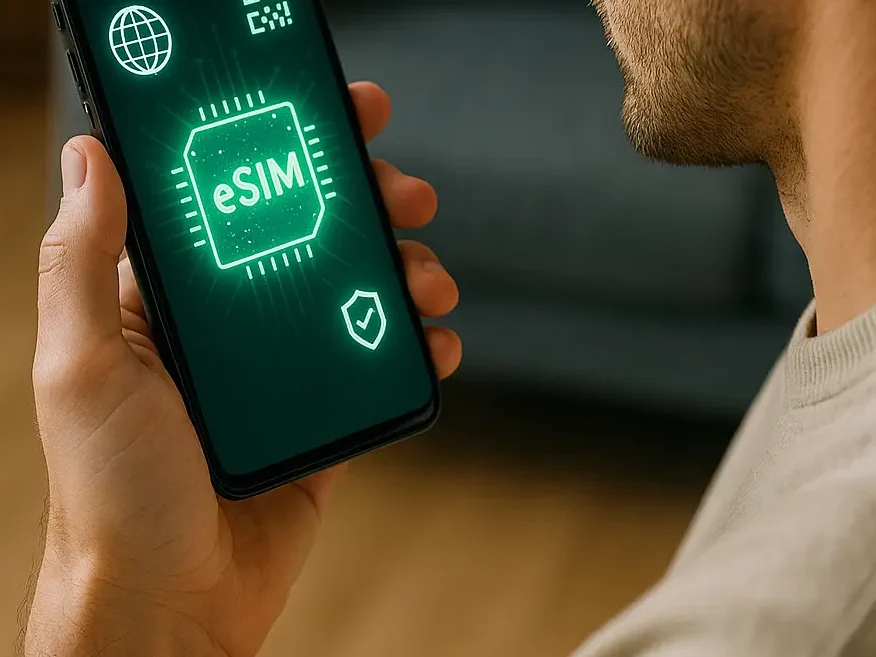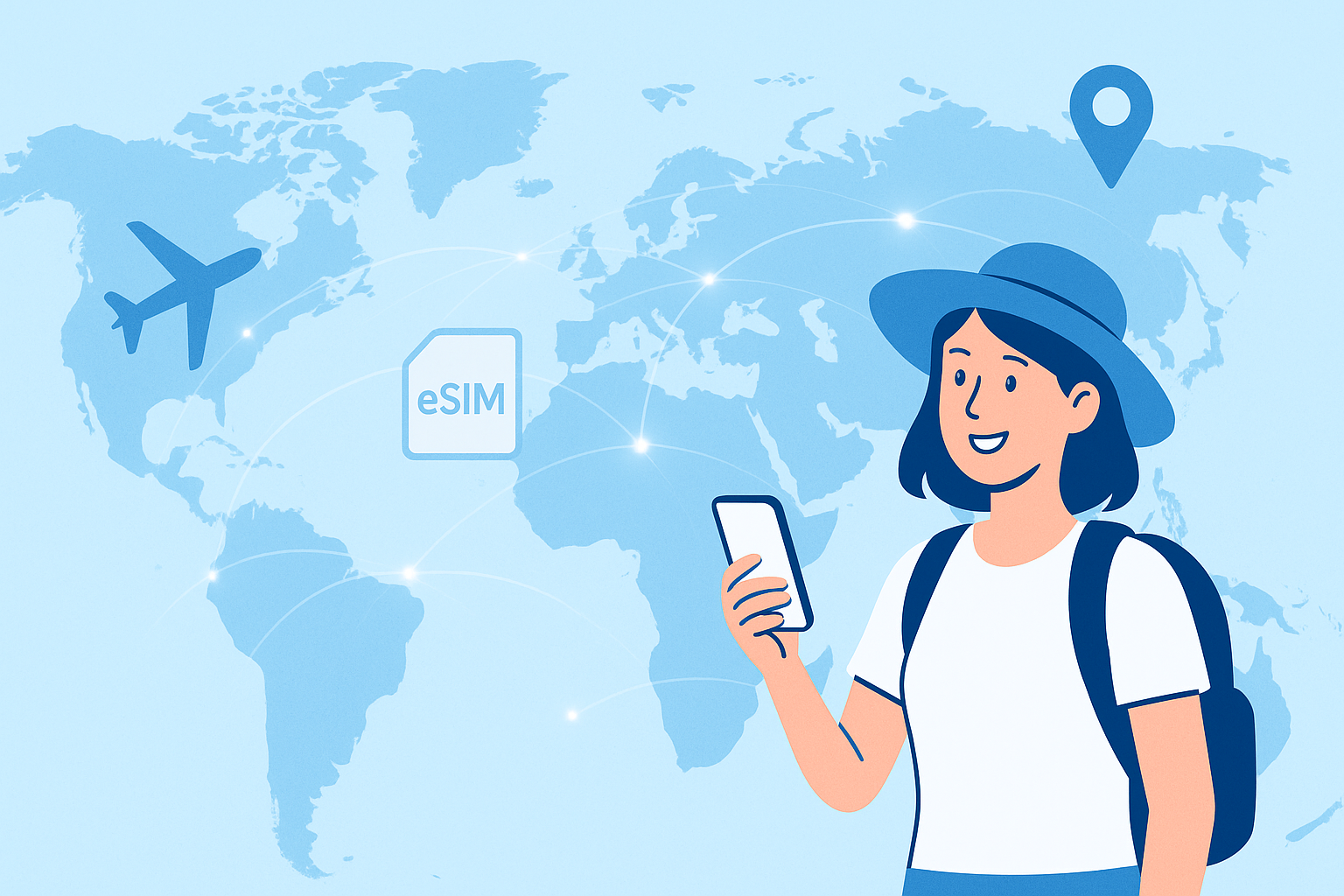As the Internet of Things (IoT) ecosystem expands rapidly, it’s reshaping everything from smart cities to autonomous vehicles. Amid this transformation, one technology stands out as a game-changer: the eSIM. Specifically, eSIM technology in IoT devices is making secure, scalable, and seamless connectivity possible across every industry.
Let’s dive into how eSIM IoT innovation is empowering billions of devices with smarter, faster, and more flexible connectivity.
What Is eSIM in IoT Devices?
eSIM, or Embedded Subscriber Identity Module, is a programmable chip embedded into a device’s hardware. Unlike traditional SIM cards, which are removable and manually configured, eSIM IoT modules enable remote SIM provisioning and over-the-air network switching—ideal for cellular IoT applications.

This means devices can:
- Connect instantly upon deployment
- Switch carriers without physical access
- Scale globally with minimal manual setup
This makes eSIM technology in IoT not just convenient but foundational for the future of smart systems.
Key Benefits of eSIM IoT Integration
Remote SIM Provisioning
With remote SIM provisioning, you can activate, manage, and switch network profiles entirely over the air (OTA). This is especially critical in sectors like logistics, smart agriculture, or industrial automation.
Scalable, Global Connectivity
From smart sensors in farms to remote drones in the Arctic, eSIM-enabled IoT devices can easily connect across borders without SIM swaps or local contracts.
Secure eSIM IoT Architecture
By embedding the SIM in hardware, eSIM IoT modules become tamper-resistant. Many devices now support SGP.32 eSIM specification, providing advanced encryption and access control.
Smaller Footprint, Lower Costs
The absence of SIM trays reduces space requirements, enabling smaller wearables, sensors, and IoT eSIM modules with lower production costs.
Where eSIM Technology in IoT Is Making an Impact

Connected Vehicles & Fleets
eSIM allows cars to connect instantly in any region, making cross-border vehicle tracking, remote diagnostics, and infotainment seamless. Paired with cellular IoT, eSIM provides uninterrupted vehicle-to-everything (V2X) communication.
Smart Cities & Infrastructure
Public lighting, traffic signals, and emergency alert systems are adopting eSIM IoT modules to ensure constant connectivity, even during network outages or provider failures.
Healthcare IoT
Wearables, portable monitors, and telemedicine devices now rely on secure eSIM IoT connections to transmit health data in real-time. Doctors can monitor patients from anywhere with reliable, encrypted access.
Industrial IoT (IIoT)
In heavy manufacturing, remote SIM provisioning allows for quick deployment of sensors and robotic systems, without on-site SIM changes or downtime.
Logistics & Supply Chain
Shipping containers and delivery trucks equipped with eSIM IoT trackers can report real-time location, temperature, and shock data throughout the supply chain.
The Future of eSIM in IoT: What’s Coming Next
eUICC & SGP.32 Standards
The GSMA’s SGP.32 eSIM specification brings standardization to the IoT eSIM space, ensuring smoother network handovers, enhanced security, and global interoperability.
iSIM (Integrated SIM)
The evolution of eSIM, known as iSIM, further integrates the SIM into a device’s processor. This makes devices even smaller, more power-efficient, and secure—perfect for low-power cellular IoT deployments.
AI-Driven Network Switching
Future-ready devices will use AI to dynamically choose the best available network for cost, latency, or signal quality—maximizing the potential of eSIM in IoT.
Global Rollouts with Cellular IoT
With over 3.5 billion cellular IoT connections and growing, businesses are leveraging eSIM IoT modules to scale globally without increasing physical logistics.
Final Thoughts: Why eSIM Is the Backbone of Future IoT
The convergence of eSIM technology in IoT, remote provisioning, and next-gen specs like SGP.32 and iSIM is driving a monumental shift in the way we connect devices.
From smart farming and logistics to next-gen healthcare and autonomous vehicles, eSIM IoT is enabling a world of seamless, secure, and scalable connectivity.
If your organization is exploring IoT expansion, eSIM is not optional—it’s essential. Embrace the future with technology that adapts, scales, and secures your connected ecosystem from the ground up. Explore our exclusive eSIM coupons, deals and enjoy uninterrupted connectivity.
Frequently Asked Questions (FAQs)
1. What is an eSIM in IoT devices?
An eSIM (Embedded SIM) in IoT devices is a programmable chip built directly into the hardware, allowing over-the-air activation and management of mobile network profiles without the need for a physical SIM card. It simplifies deployment, enhances security, and enables scalable connectivity for IoT applications.
2. How is eSIM technology transforming IoT connectivity?
eSIM technology in IoT allows devices to switch between mobile carriers remotely, maintain continuous connectivity, and scale across regions without manual SIM swaps. This flexibility is crucial for smart cities, logistics, and industrial automation where uptime and remote access are essential.
3. What is remote SIM provisioning and why is it important?
Remote SIM provisioning is the process of activating and managing mobile operator profiles over the air. In eSIM IoT devices, this enables deployment without physical access—saving time, reducing costs, and allowing seamless carrier switching as needed.
4. What industries benefit most from eSIM IoT technology?
Industries such as:
- Logistics & Supply Chain (real-time asset tracking)
- Healthcare (remote monitoring devices)
- Automotive (connected vehicles)
- Manufacturing (predictive maintenance)
- Smart Cities (infrastructure monitoring)
all benefit from eSIM IoT modules due to their flexibility, security, and scalability.
5. Is eSIM more secure than traditional SIM cards?
Yes, secure eSIM IoT architecture offers enhanced protection. Since eSIMs are embedded in the device, they are resistant to tampering and physical theft. With compliance to standards like SGP.32, they also support encrypted provisioning and remote access control.







Leave a Reply